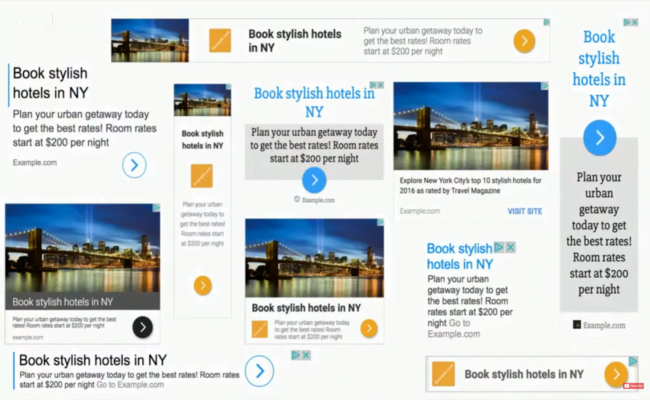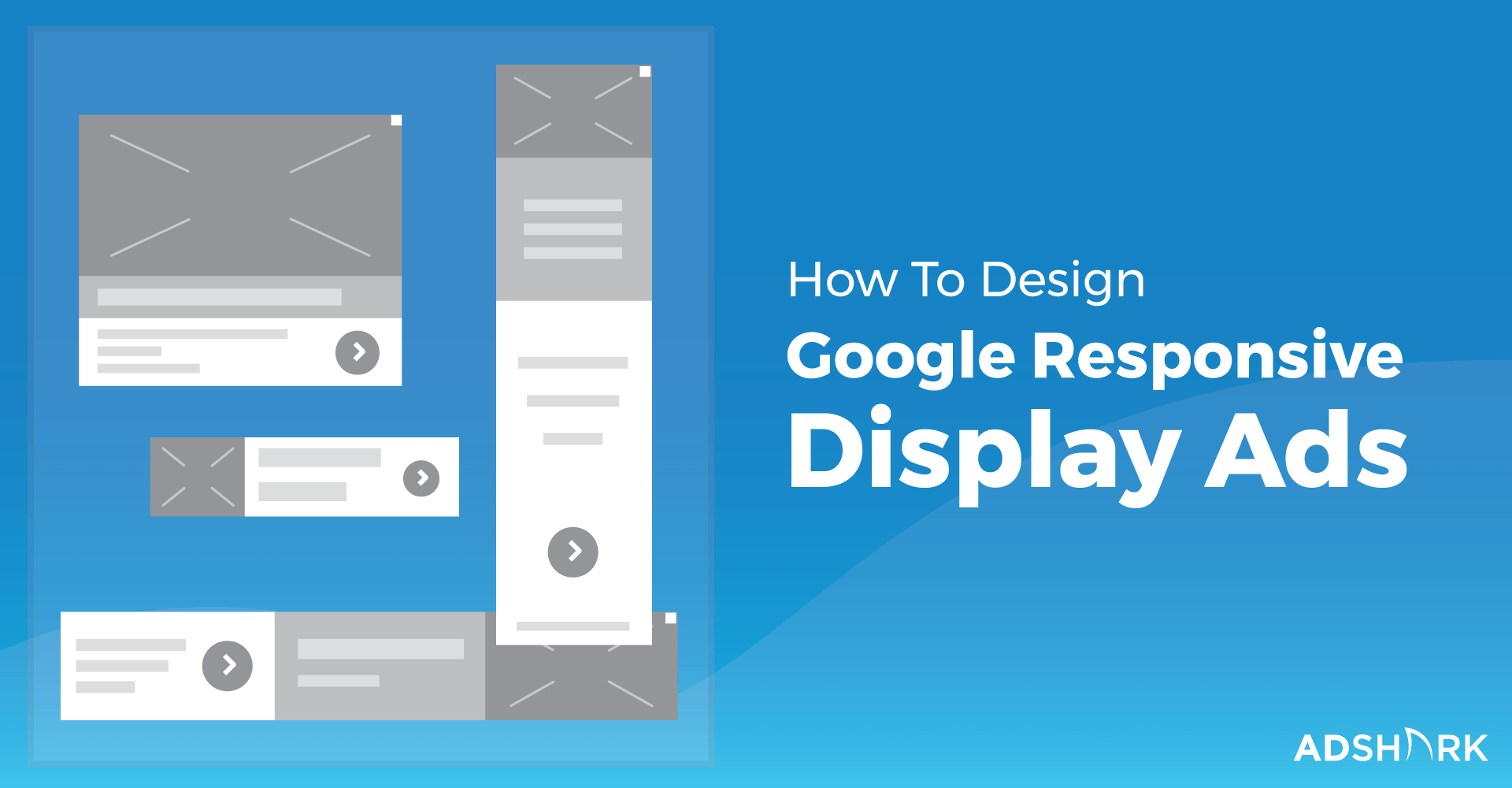Google Responsive Display Ads Image Sizes
Are you tired of using static, unengaging advertisements that provide no return on investment? Look no further than Google Responsive Display Ads Image Sizes! These ads adjust in size and format, capturing the user's attention and interest. They provide an interactive experience that increases the chances of capturing potential customers. Learn more about this powerful marketing tool and how it can benefit your business.
One of the most significant pain points of digital advertising is creating ads that can be viewed on multiple devices. With the Google Responsive Display Ads Image Sizes, businesses no longer have to worry about creating ads in multiple sizes, saving both time and effort. These ads automatically adjust to fit the size and format of a given device, providing streamlined and impactful advertising to users on any device.
The primary target of Google Responsive Display Ads Image Sizes is to provide businesses with a tool to reach a broader audience base. These ads allow for personalization and optimization, ensuring that the ad campaign is reaching its intended audience, leading to a higher conversion rate.
In summary, implementing Google Responsive Ads Image Sizes into one's advertising strategy can provide numerous benefits, such as UDO optimization, audience targeting, and increased engagement. In this article, we'll dive deeper into the features and best practices surrounding this tool.
Google Responsive Display Ads Image Sizes
Choosing an appropriate size for one's advertisements can be a daunting task, but with Google's Responsive Display Ads, one can take advantage of automated sizing. These ads automatically adjust to fit any device and will provide the best visual aesthetic for users. The following is a chart that displays the most commonly used sizes for Google Responsive Display Ads image sizes:

When designing ads, it's essential to be mindful of creating content that is both visually engaging and straightforward to read. Providing meaningful content and enticing visuals can lead to higher click rates and, ultimately, higher conversion rates.
Experts suggest creating ads that are concise and visually appealing. Consider carousel or video ads to provide more information and interest to the user. When using images, ensure they are high-quality and clear, with alt tags and additional descriptions included to help improve search engine optimization.
Tips on Google Responsive Display Ads Image Sizes
When designing an ad campaign utilizing Google Responsive Display Ads Image Sizes, keep these tips in mind. First and foremost, create visually appealing content that is easy to read and provides unique selling points of your product or service. Ensure that the images used are high-quality and are of the correct resolution to avoid pixelated or blurry images. Finally, keep the audience in mind when creating the ad and customize it to their needs and preferences.
About Google Responsive Display Ads Image SizesGoogle Responsive Display Ads Image Sizes provide businesses with a versatile advertising solution. Many businesses struggle to create personalized ads that can be used across various devices. These ads automate this process by adjusting to any device, making them visually appealing and easier to read on any screen size.
Famous Person on Google Responsive Display Ads Image SizesGoogle Responsive Display Ads Image Sizes have grown increasingly popular in recent years, changing the way businesses market themselves in digital spaces. Many prominent advertisers utilize Responsive Display Ads to reach their intended audience and increase engagement, making it a popular tool among industry professionals.
WHY ITS AMAZING TO HAVE ONE Google Responsive Display Ads Image Sizes
Google Responsive Display Ads Image Sizes provide numerous benefits for businesses. These ads automate the resizing process, reducing the time and effort required to create ads. Additionally, they provide a more interactive experience, increasing engagement and higher conversion rates.
Featured Google Responsive Display Ads Image Sizes
Here are some examples of effective Google Responsive Display Ads Image Sizes:

By implementing these ad designs, businesses can provide highly effective advertising campaigns that engage and convert users on any device.
Maintenance Google Responsive Display Ads Image Sizes
When creating Google Responsive Display Ads Image Sizes, keeping them updated and refreshing their content is essential. Regularly updating images, descriptions, and alt tags helps keep the ad campaigns relevant and improve their search engine optimization. Additionally, monitoring and adjusting ad performance can ensure that the ad campaign is reaching its intended audience and achieving its desired outcomes.
Comparison of Google Responsive Display Ads Image Sizes with Others
Compared to traditional static ads, Google Responsive Display Ads Image Sizes provide a more personalized and interactive advertising experience for users. These ads adjust to any device, providing a streamlined and visually appealing appearance. carousel or video ads provide a more immersive experience for users, increasing engagement and conversion rates.
Fact
According to Google, utilizing Responsive Display Ads can increase conversions by up to 10% compared to regular display ads. Personalizing the ads to the intended audience can increase clickthrough rates by 20%. I have seen a noticeable improvement in engagement and conversion rates after implementing Google Responsive Display Ads into my ad campaigns.
Question and Answer about Google Responsive Display Ads Image Sizes
Q: Are there any downsides to utilizing Google Responsive Display Ads Image Sizes?
A: One potential downside is that the automated resizing can sometimes lead to images being cut off or not entirely visible. This can affect the visual appeal of the ad and decrease engagement rates, so it's crucial to ensure that the images used are appropriately sized and formatted.
Q: How do carousel and video ads differ from static image ads?
A: Carousel and video ads provide an interactive and immersive experience for the user, increasing engagement rates and ultimately conversion rates. Utilizing this type of ad can provide users with more information about a product or service and increase their interest in it, leading to higher click rates.
Q: What image formats are supported in Google Responsive Display Ads Image Sizes?
A: Google Responsive Display Ads Image Sizes accept most common image formats, such as JPEG, PNG, and GIF. It's crucial to ensure that the image is high-quality and appropriate for its intended use.
Q: How often should I update my Google Responsive Display Ads Image Sizes?
A: It's recommended to update the content of the ads every few months and to monitor their performance regularly. Consistently updating images and descriptions and refreshing the ad will help keep it current and relevant to the intended audience.
Conclusion
Google Responsive Display Ads Image Sizes are an essential tool for businesses looking to grow their audience base and increase engagement and conversion rates. Utilizing this tool can provide personalized and visually appealing ads across various devices and give businesses autonomy in their advertising campaigns. Keep the tips and best practices outlined in this article in mind when designing your ad campaign and experience the benefits of increased engagement and higher conversion rates.
Gallery
6 Best Practices For Responsive Ads On The GDN (2022)

Photo Credit by: bing.com /
Google Ads Display Ad Sizes: Your Ad Specs Cheat Sheet (2022)

Photo Credit by: bing.com /
Logos Ads Examples

Photo Credit by: bing.com /
The Ultimate Guide To Google Responsive Display Ads - Google Ads

Photo Credit by: bing.com /
What Is A Google Responsive Display Ad? - PlusROI
Photo Credit by: bing.com / google display responsive ad ads navigation

Post a Comment
Post a Comment